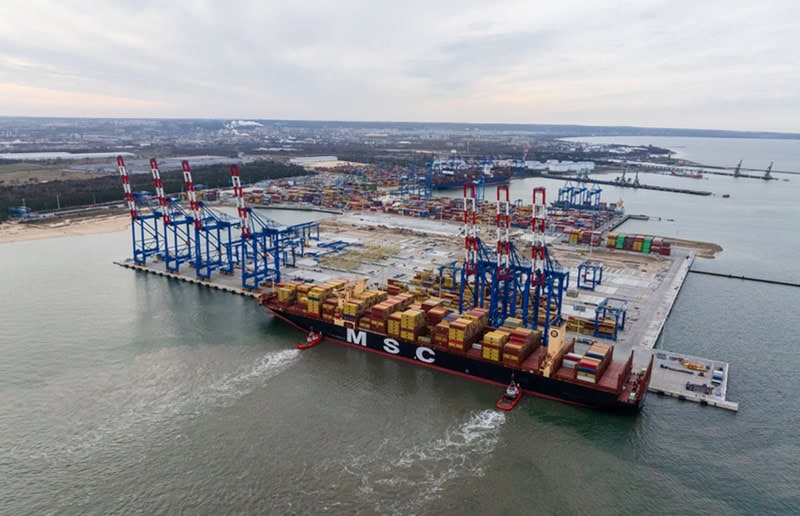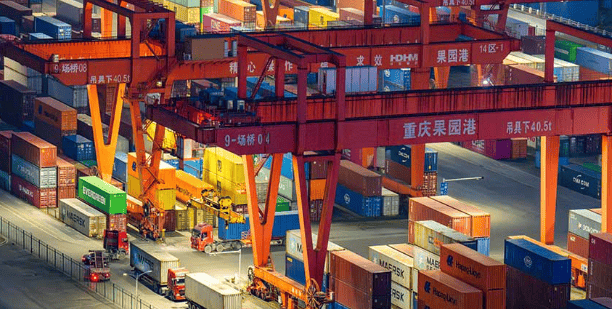On April 5, 2025, Baltic Hub – the largest and fastest-growing container terminal on the Baltic Sea – welcomed for the first time the new Britannia service operated by Mediterranean Shipping Company (MSC), connecting the Far East with Europe. As part of this service, the large ocean-going vessel MSC ROSE called at the terminal.
MSC ROSE, measuring 364 meters in length, 51 meters in width, and with a capacity of 15,486 TEU, was handled at the new T3 quay. The ship’s route includes the ports of: Shanghai, Ningbo, Yantian, Vung Tau, Singapore, Colombo, Felixstowe, Antwerp, and Gdańsk. Although Terminal T3 will reach full operational capacity by the end of 2025, the newly constructed quay – equipped with state-of-the-art STS cranes – already allows for trial operations on some of the largest vessels in the world.
“The arrival and handling of MSC ROSE as part of the new Britannia service at quay T3 confirms the importance of this investment for the future of shipping and logistics in Central and Eastern Europe. Baltic Hub continues to grow and support its clients in their further development while maintaining the highest operational and safety standards,” commented Jan Van Mossevelde, CEO of Baltic Hub.
Terminal T3 – An Investment in the Future
The new Terminal T3, built on an area of 36 hectares, is connected to the existing T1 and T2 terminal infrastructure, forming one large complex of three deep-water quays with storage yards.
T3 offers new development opportunities for Baltic Hub’s clients – more quay length, new cranes, and expanded yard space. Once completed, Baltic Hub will have over 124 hectares of operational area, approximately 2.1 km of deep-water quay, 21 STS cranes, 74 yard cranes (RMG and RTG), as well as an already existing modern railway siding with seven 750-meter-long tracks and a long-operational automated truck gate complex. With this, Baltic Hub will become one of the largest container terminal complexes in Europe, with an annual handling capacity of 4.5 million TEU.



